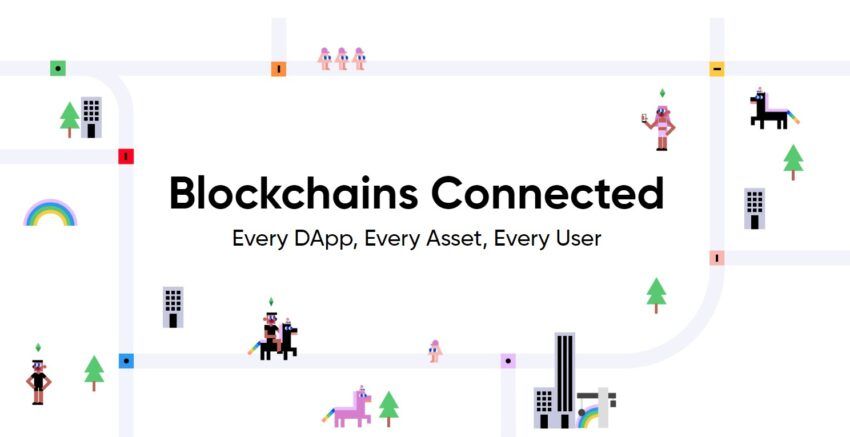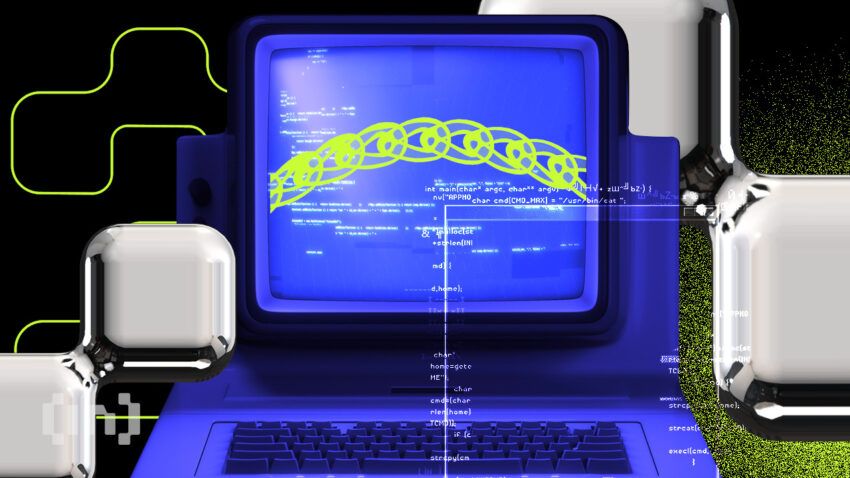The Celer Network (CELR) combines layer-2 solutions to enable a smoother user experience across multiple blockchains. In this guide, we take a look at the inner workings of the Celer Network. Here’s how the project aims to solve the incompatibility issues that surround decentralized applications in 2024.
KEY TAKEAWAYS
• Celer Network is a layer-2 scaling solution that improves blockchain throughput, enabling faster and cheaper transactions.
• The Celer Inter-chain Messaging Framework allows DApps to interact across various blockchains.
• Celer’s technology has several use cases, including across DeFi, decentralized exchanges, gaming, NFTs, and more.
• Despite its solutions, Celer faces strong competition from established layer-2 technologies.
What is Celer Network?

Celer Network is a protocol that aims to boost the throughput and scalability of blockchain networks while also ensuring swift and cost-effective transactions.
The layer-2 scaling solution aims to address the most pressing issue in the blockchain space: the trade-off between scalability and decentralization. The Celer Network looks to achieve this feat by employing off-chain scaling techniques, enabling a higher volume of transactions off the main chain.
Most experts agree that blockchains scale in layers. That seems to be no different for Ethereum, where EIPs for the main chain have only been able to address the scaling challenges to a certain degree.
Even the most important EIPs designed to solve Ethereum’s scaling issues have arguably not been as effective as off-chain scaling solutions.
“Off-chain scaling is not merely an optimization but the only way to support fully scale-out DApps with better privacy and no compromise on the trust and decentralization guarantees. It is the inflection point for blockchain mass adoption and will be the engine behind all large-scale decentralized applications”.
Co-founder Mo Dong in interview with LilMoonLambo: Medium
Celer’s primary objective is to streamline smart contract operations, increase the throughput of off-chain transactions, and provide a seamless experience for DApps across a range of blockchain platforms, such as Ethereum and Polkadot.
One of the Celer team’s major products is the Celer Inter-chain Messaging Framework, which enables developers to create native DApps that work seamlessly across different blockchains.
This framework facilitates the effective use of liquidity, ensures consistent application logic, and enables shared states. Through Celer’s Inter-chain Messaging-enabled DApps, users can take advantage of a diverse multi-blockchain ecosystem.
Did you know? The name “Celer” comes from the Latin word “celeritas,” which translates to “swiftness” or “speed.”
Celer network core team
The core team has four founders. They are all Ph.D. holders from leading computer science schools, such as Princeton, MIT, UC Berkeley, and UIUC.
Dr. Mo Dong is the CEO. He earned a Ph.D. from UIUC with a research focus on learning-based networking protocol design, distributed systems, formal verification, and game theory. Dr. Dong led a project that improved cross-continental data speed by 10X to 100X using clever algorithms.
Dr. Junda Liu holds a Ph.D. from UC Berkeley. He worked at Google and was one of the founding members of Google’s Project Fi, a mobile service. He helped it grow from a concept to a more than $100M per year business within two years.
Dr. Xiaozhou Li received a Ph.D. from Princeton University. His specialization is building scalable algorithms and protocols that offer high performance at low cost. Google and Intel have used some of his work.
Dr. Qingkai Liang received his Ph.D. from MIT in distributed systems, with a specialization in optimal network control algorithms in adversarial environments. Some of his breakthrough algorithms were used in Raytheon BBN Technologies and Bell Labs.
How does the Celer Network work?
Celer uses some of the approaches of existing layer-2 solutions to achieve its own objectives. For example, it leverages state channels, as seen in scaling solutions like Bitcoin’s Lightning Network, to enable instant and low-cost transactions. But, the network also employs a new Distributed Balanced Routing algorithm to achieve higher throughput.
It also uses a proof-of-stake (PoS) consensus mechanism built on Tendermint that enables different blockchains to communicate with each other. It can be used as a sidechain that provides layer-1 blockchain-level security like Cosmos or Polygon with CELR as the platform asset.
Celer has two distinct security models, one similar to optimistic rollups like Optimism and Arbitrum and another akin to a PoS blockchain security model, as mentioned above.
An inter-chain decentralized application on Celer can choose either or adopt both, with trade-offs regarding security, cost, and speed for these options.
Fundamentally, Celer uses smart contracts atop diverse blockchains and employs off-chain scaling solutions to improve speed and user experience for DApps. Let’s examine some of its technical architecture.
cChannel
This is the base or bottom layer of the Celer platform. It employs two popular off-chain scaling techniques on this layer: state channels and sidechains. State channels were first introduced with Lightning Network to enable high-throughput off-chain Bitcoin micropayments, while Polygon uses sidechains on Ethereum.
The cChannel layer interfaces with layer-1 blockchains like Ethereum, then updates the layers on top of it with the current blockchain states.
cRoute
Celer Network employs a routing approach known as Distributed Balanced Routing (DBR). This algorithm aims to solve problems with existing state channel solutions like Lightning Network and Raiden Network.
Celer’s approach is to distribute traffic through what it calls congestion gradients, which it claims achieves 15x higher throughput than others in its whitepaper.
cOS
This is a user-friendly framework and runtime for creating, running, and using scalable off-chain DApps. With cOS, developers can focus on building great user experiences while the system handles the technical complexities of off-chain scaling.
State Guardian Network (SGN)
Celer’s solutions are built upon the SGN, a proof-of-stake (PoS) blockchain based on the Cosmos blockchain. Within SGN, validators oversee Celer’s smart contracts across different chains. Their responsibility involves relaying messages or transfers to the relevant contracts on the target chain.
Those who hold CELR tokens can actively engage with SGN by becoming validators or through delegation. In return, participants in SGN receive staking rewards and fees.
Celer Inter-chain Message Framework (IM)
Celer IM uses SGN’s capability to verify cross-chain messages sent from one chain and transfer them to another. With the combination of Celer cBridge, Celer IM’s structure allows both tokens and various data to be sent in a single transaction. That opens up opportunities for developers to create multi-blockchain applications with the simplicity of a single-transaction user experience.
cBridge
Launched in 2021, this layer facilitates swift and cost-effective value transfers across various layer-1 and layer-2 chains.
You can easily move value between different layer-2 networks on Ethereum, like Optimism, Arbitrum, and Loopring, and PoS sidechains, such as Matic. It has also expanded support to other blockchains like BNB Chain, Avalanche, Aptos, and many others.
Layer2.finance
Layer2.finance is another major addition to the Celer Network. It aims to address significant challenges in DeFi adoption, such as high transaction fees and user complexity.
It enables users to transfer funds across various DeFi protocols with reduced costs, with the option to use either the optimistic rollup or zero-knowledge proof architecture through the application. You can move funds between major DeFi protocols like Compound, Aave, and Curve.
What makes Celer different from other layer-2s?
The blockchain promises to be extremely fast, scalable, and secure. It offers developers options between different security models. Moreover, it provides the ability to pick and choose based on what they are optimizing for at any particular time.
Celer’s layer-2 scaling technology has also focused on interoperability across the major blockchains, prioritizing a multi-chain future to enable developers to build applications that can speak to each other on several blockchains, thereby giving the end user a simple experience.
However, Celer faces massive competition from dominant and well-established competitors who are narrowly focused on one technological approach, such as optimistic rollups and zero-knowledge proofs.
For example, Arbitrum and Optimism already have a large market share in the Ethereum ecosystem, which is the biggest smart contract blockchain. There’s also competition from peers like Cartesi, which has staked a claim as an app-specific solution.
The network’s unique value proposition is the ability for developers to deploy its strengths of speed and liquidity efficiency for several use cases, including DeFi, NFTs, governance, and gaming.
The CELR token
The CELR token plays a pivotal role in facilitating various network functions. CELR is an ERC-20 token on the Ethereum blockchain that serves multiple purposes, including staking, transaction fees, and governance. The circulating supply is almost 7.7 billion CELR, with a total and maximum supply of 10 billion.

CELR staking allows users to participate in network security and earn rewards, while transaction fees are paid using CELR coins, contributing to the network’s economic model. Furthermore, CELR holders have a say in the platform’s development and decision-making processes through governance mechanisms.
Celer Network use cases
One of Celer’s primary use cases is DeFi. There, high transaction fees and slow confirmation times on Ethereum have been persistent challenges. By enabling faster and cheaper transactions, Celer Network can enhance the efficiency and accessibility of DeFi platforms, opening new possibilities for users and developers.
Its technology has uses in other areas, including:
- Decentralized exchanges: Developers can build solutions that enable users to swap tokens across different chains with a single transaction.
- Bridges: It allows users to send their tokens and NFTs across multiple chains. cBridge is an example of a bridge platform on Celer’s network.
- Yield aggregators: Developers can build applications that enable users to manage multiple blockchain vaults from a single chain.
- Lending protocols: Liquidity or collateral on one chain can be used to borrow assets on another chain.
- Governance: Projects can have a unified governance mechanism without requiring participants to move governance tokens across different blockchains.
Pros and cons of Celer
Like any blockchain solution, Celer Network comes with its own set of advantages and limitations.
| Pros | Cons |
|---|---|
| Enhances scalability of popular blockchain platforms, allowing for more transactions to be processed | Slow network adoption in part due to strong competition across layer-2 solutions |
| Conducts transactions off-chain allowing users to avoid high gas fees | Conducts transactions off-chain, allowing users to avoid high gas fees |
| Applied to a wide range of applications, including DeFi, gaming, and NFTs |
Celar Network is a DeFi booster
Celer Network solves a major blockchain problem. It provides simple tools and a framework that allows developers to build inter-chain DApps, allowing users to use multiple chains relatively cheaply. However, the network has some heavyweight competitors in the much-contested layer-2 space. Its success in solving the current trade-off in blockchain between scalability and decentralization will likely depend on its adoption.
Disclaimer: This article is written for informational purposes only. It should not be considered investment advice. Always do your own research (DYOR).
Frequently asked questions
Who is behind Celer Network?
What blockchain is CELR on?
What is the Celer network used for?
Who is the founder of Celer Network?
Disclaimer
In line with the Trust Project guidelines, the educational content on this website is offered in good faith and for general information purposes only. BeInCrypto prioritizes providing high-quality information, taking the time to research and create informative content for readers. While partners may reward the company with commissions for placements in articles, these commissions do not influence the unbiased, honest, and helpful content creation process. Any action taken by the reader based on this information is strictly at their own risk. Please note that our Terms and Conditions, Privacy Policy, and Disclaimers have been updated.




